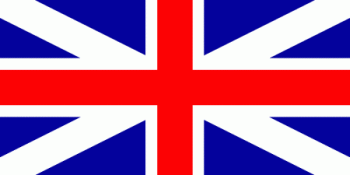Articles
Articles written by Branch Members
- The United Empire Loyalists by Gene Aitkens UE
- A Brief History of the UEL Association by Gene Aitkens UE
- Butler's Rangers by Harold F. Morgan UE
- Christian Riselay/Hannah Schauer by Harold F. Morgan UE
- Hendrick Windecker by Harold F. Morgan UE
- Adam Young by Robert Collins McBride UE
- Daniel Young by Dr. David Faux
- Christian Keller by Maralynn Wilkinson UE
- James Peters by Mary Sandford UE
- Christian Hennigar by Carl Hennigar UE
- Pvt Jacob Teague by David B. Clark UE
- Pvt Joseph Goodwillie by David B. Clark UE
- Ensign Adam Green UE by David B. Clark UE
- The Butler's Rangers Uniform by David B. Clark UE
- Baking and Cooking in the 18th Century by David B. Clark UE
BUTLER'S RANGERS
Butlerís success with the Indians during the campaign at The Battle at Oriskany Creek led Sir Guy Carleton to authorize him to raise a Corps of Rangers to serve with the Indians on the frontiers. The Beating Order was issued 15 September 1777. The Corps was variously referred to as: "A Corps of Rangers commanded by Colonel Butler," "Lieutenant Colonel Butlerís Rangerís," "Butlerís Corps of Rangers," and Butlerís Rangers," the latter being the most common designation. Butler wrote the Commander-in-Chief asking that the Corps be given a formal designation, but nothing seems to have come of the request.
There is no known Ranger uniform in existence today. In all probability, when the Rangers were disbanded the soldiers had little clothing, and they wore their uniforms until they were worn out.
The uniform with which the Corps was issued closely resembled that worn by the British Regulars and other Provincial corps raised in Canada. Charles Lefferts stated that it consisted of:
...dark green coats faced with scarlet and lined with the same, a waistcoat of green cloth, and buckskin Indian leggings reaching from the ankle to the waist...their caps were almost skull caps of black jacket leather with a black cockade on the left side and a brass plate in front with the letters GR and words Butlerís Rangers. Their belts were of buff leather and crossed at the breast where they were held in place by a brass plate marked in the same manner and with the same words as the cap plate...
It is unlikely, though that the description of the cap plate is accurate, for distinctive regimental cap badges did not come into general use in the British Army until after 1800, which leads to some divergence of opinion as to whether there was a helmet plate, whether the cartridge pouch plate was worn, whether the design was painted on the front plate, or whether there was anything worn on the cap itself.
The Rangers had another field uniform that they worn when they were in the bush. They wore a smock which was dyed a dark green and worn wrapped tightly around the body so that it would not get caught on anything when they were travelling through the bush. They usually carried a knife, tomahawk and a club tucked in their belts.
The British Regulars did not like fighting in the woods with the Rangers as the Rangers were in dark green clothing while the Regulars were wearing their bright uniforms. There was another cause for discourse between the Rangers and the Regulars. The Rangers had to supply their own firearms. Because of this they were paid more than the Regulars. They also were billeted at different camps to keep the different factions apart.
The Rangers usually fought in pairs. One would kneel while his partner would stand close behind him. One of the pair would shoot while the other one covered him while he reloaded and then he would shoot.
Some of the Rangers had smooth bore muskets while others had muskets with riffling. The smooth bore was not very accurate. Colonel George Hanger, a Revolutionary veteran to comment on their performance.
A soldierís musket, if not exceedingly ill-bored... will strike the figure of a man at eighty yards; it may even at 100; but a soldier must be very unfortunate indeed who shall be wounded... at 150 yards, provided that his antagonist aims at him...I do maintain...that no man was ever killed at 200 yards by a common soldierís musket by the person who aimed at him.
by Harold F. Morgan UE

